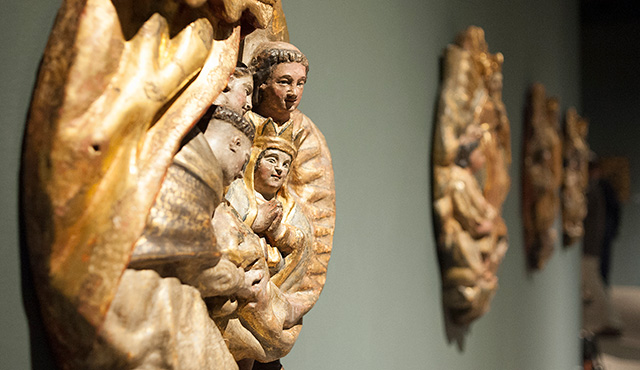Opening our children’s eyes to the love of God and the mysteries of our Catholic faith keeps us parents plenty busy. We shuttle the family to Sunday Mass, send our kids to parochial schools and say our prayers before bed. Considering all of that, it seems sometimes that if we must add one more thing to our plates, our well-planned lives will fly into a tailspin.
Still, Catholic parents who want to teach their children about the world God has made for us will want to make sure their kids are inspired to later visit colorful art galleries, ponder the gilded contents of museums, listen to a sublime symphony or attend a graceful ballet performance.
Culture may be man-made, while religion is wholly associated with our Creator. Yet the world’s great religions include rituals and sermons, sacrifices and festivals, and other aspects of human culture in their practice. Often included are dancing, playing music and singing.
Because God made us in His image and He loves beauty in all its forms, doesn’t it make sense that He wants to share it all with us?
“Philosophy includes four transcendentals: Truth, goodness, beauty and love,” says Katie Dawson, director of Faith Formation for the Diocese of Orange. “These four things deeply resonate in the human heart. When we look at things that we are attracted to, they are always some expression of one or a combination of these.
“Anything beautiful feeds our soul and helps us connect with the divine in some manner,” she continues. “However we can help our kids discover these four things to enrich their lives, the richer their life experience will be.”
As we try to provide our children with various experiences, it makes sense to scan cultural opportunities in our communities and put them on our busy calendars. Central Orange County’s Bowers Museum in Santa Ana, for instance, has traveling exhibitions from all over the world as well as a vast number of art and artifacts from Orange County’s history. The Norton Simon Museum in nearby Pasadena is on a small scale, perfect for little visitors. The Pacific Symphony, South Coast Repertory Theater and Segerstrom Center all provide performances appropriate for kids, including jazz musicians, dramatic and humorous plays, and visiting acrobats and ballet companies.
Bowers’ visiting exhibits can include the mummified kings of Egypt, temple murals from Buddhist China, or church relics from Europe. “These outings are great gifts we can share with children,” Dawson says. “The challenge is interrupting the hustle-bustle of our lives to expose to them firsthand, rather than in textbooks.”
Planning to attend an opera, stage play, classical music performance or ballet requires lots of warning, but experiential learning sticks with a child even more than straight-A studies. “All these opportunities are meant to help them broaden their understanding of our world and where we come from,” she notes. “Diverse cultures express themselves in numerous ways.”
At the same time, parents shouldn’t get too ambitious about exposing young children to the arts. “It’s important to pay attention to what the child responds to, and not overload them with experiences that are too sophisticated for their development stage,” Dawson warns. “Three-year-olds should not be attending the opera.”
With small children, cultural touchstones in the home resonate best. “We have picture books iconic in family life, like ‘Goodnight Moon’ and ‘I Love You Forever,’ that are appropriate at even the earliest ages,” she notes. “That’s when kids have their first encounter with art.”
As children get older, she says, parents can guide a museum visit by preparing their kids for what they will see. If a Van Gough self-portrait is on display, they can ask their children to look for the painting of the red-haired man, she suggests.
Short trips can later be longer so that kids have a good time with art, Dawson says. “It’s a taste of a beautiful experience at a level they can appreciate – a lot shorter than an adult’s – but they are spending time with art. Then, you go get ice cream.”

